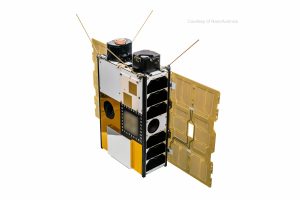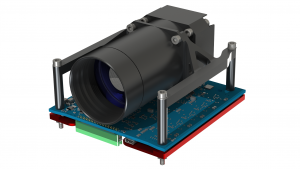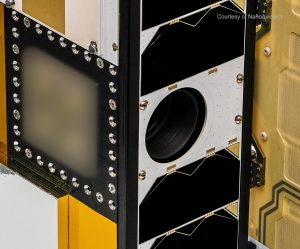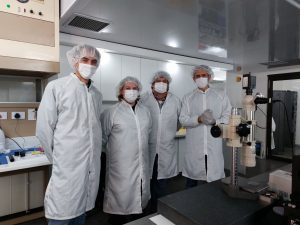
Stellenbosch, South Africa, 29 June 2021 – Today, Dragonfly’s Mantis hyperspectral imaging payload will hitch a ride to space from SpaceX, as a part of the NanoAvionics’ rideshare mission D2/AtlaCom-1.
About the Mission
“D2/AtlaCom-1” is a satellite mission dedicated to the in-orbit demonstration of new satellite technologies as well as novel satellite applications. This shared satellite mission comprises an international consortium and its partners called “HyperActive” and an electric propulsion demonstration by Accion Systems.
The HyperActive consortium comprises Dragonfly Aerospace (South Africa) and Space JLTZ (Mexico) with NanoAvionics US as a consortium supplier, as well as mission participants Polytechnic University of Atlacomulco (Mexico) and CubeCom (South Africa).
D2/AtlaCom-1 is a 6U nanosatellite from NanoAvionics that includes 5 payloads: Mantis hyperspectral imager from Dragonfly Aerospace; high-gain XANT4 X-Band Antenna and an upgraded version of the XTX X-band downlink transmitter from Cubecom; CubeStar Star Tracker from CubeSpace and TILE Thruster from Accion Systems. The total weight of the nanosatellite is 7.8kg. The target lifetime of the mission is 1 year for mission success but it is expected to have an extended mission lifetime of 5 years. It will be launched into a 525 km sun-synchronous orbit by SpaceX Falcon 9 as part of their second dedicated rideshare mission called Transporter-2.

D2/AtlaCom-1 nanosatellite
The mission is designed to demonstrate the performance of Dragonfly’s ultra-compact hyperspectral imager and the high data rate communication payload from CubeCom. A secondary goal is to gauge the demand for commercial hyperspectral data, processed and distributed globally by Space JLTZ, which will apply machine-learning algorithms to make the data more practical for everyday observations. Dragonfly Aerospace will also be providing an X-band data download ground station for the mission.
The Mantis is Dragonfly’s smallest hyperspectral remote sensing camera, the other one being the 2U-sized Chameleon, which will also see its first flight opportunity in 2021. Although the Mantis imager is only 0.5U in size, it provides impressive performance in such a small package. It also has a unique software capability which allows it to combine any of the available 160 hyperspectral bands into customizable multispectral bands as needed for individual imaging sessions – essentially a “software defined” camera. The camera features a 16-meter native ground sample distance (GSD) and a hyperspectral resolution of 32 meters.

Dragonfly’s Mantis ultra-compact hyperspectral imager

Shows location of Mantis imager and XANT4 antenna
The agreement to fly Dragonfly’s imaging payload on board the NanoAvionics D-2/AtlaCom-1 satellite was reached in October 2020. The NanoAvionics and Dragonfly teams had to work fast to get the camera delivered, integrated and tested in the satellite in time for this launch. The Dragonfly camera team of Rikus Cronje, Willie Engelbrecht, Lucinda Ince, Robert Craig and Niki Steenkamp got to put their signatures on the back plate of the satellite as a reward for their hard work. A nice touch from the NanoAvionics team.

Members of Dragonfly camera team
“I am really proud of the team for pulling this project together in such a short period of time. It is great to get our first Hyperspectral camera flying. It has been a pleasure working together with the NanoAvionics team. We are really looking forward to getting the first data down from orbit. A big thanks also to our partner CubeCom for providing the X-band data transmitter for the mission. This is a critical element for nanosatellites doing this type of high performance imaging” said Bryan Dean, CEO of Dragonfly Aerospace.
About the launch
The D2 / AtlaCom-1 Nanosatellite will be launched aboard a SpaceX Falcon 9 rocket from Space Launch Complex 40 (SLC-40) at the Cape Canaveral Space Force Station, Florida. The launch is scheduled for 18h56 UTC on Tuesday, June 29.
